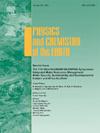Study on numerical simulation analysis methods of multi-layer discontinuous rammed earth structure
IF 3
3区 地球科学
Q2 GEOSCIENCES, MULTIDISCIPLINARY
引用次数: 0
Abstract
The structure of rammed earthen sites is affected by the ramming process, forming a discontinuous layered structure with a fragile layer interface. The weak bond tensile strength of the layer interface seriously restricts the overall stability of the rammed earth. However, due to their cultural heritage status and unique construction methodology, direct on-site monitoring of their structural integrity is often infeasible. Finite element analysis emerges as a pivotal tool for simulating diverse operational scenarios, where developing appropriate modeling methodologies remains a critical challenge. Usually, the continuous homogeneous model is often used in the stability analysis of rammed earth, and the conclusion deviates from reality. Based on ANSYS simulation, this paper constructs a continuous homogeneous, layered continuous, layered discontinuous, multi-layer discontinuous layer interface weakening rammed earth structure. Based on the spectrum test results of full-scale shaking table in-situ wall and undercutting wall simulation experiments, the main factors affecting the construction of a multi-layer discontinuous rammed earth structure model are revealed. The weakening of the weak layer of the layer interface should be considered in the rammed earth structure, which is closer to the actual situation. Layer interface weakening (material properties), thickness, number and arrangement of elements, and elastic modulus are the main influencing factors. In the model, the three-dimensional proportional relationship of the weakened layer interface does not exceed 20, and the discontinuous structural layer units are arranged one by one. The thickness of the weak layer should be moderate to ensure the accuracy of the model.
多层非连续夯土结构数值模拟分析方法研究
夯土场地的结构受夯土过程的影响,形成不连续的层状结构,层状界面脆弱。层间界面粘结抗拉强度弱,严重制约夯土的整体稳定性。然而,由于其文化遗产地位和独特的施工方法,对其结构完整性的直接现场监测往往是不可行的。有限元分析成为模拟各种操作场景的关键工具,其中开发适当的建模方法仍然是一个关键挑战。在夯土稳定性分析中,通常采用连续齐次模型,其结论与实际存在较大偏差。基于ANSYS仿真,构建了连续均质、层状连续、层状不连续、多层不连续层状界面弱化夯土结构。基于全尺寸振动台原位墙和下切墙模拟试验的频谱测试结果,揭示了影响多层非连续夯土结构模型构建的主要因素。夯土结构应考虑层间界面弱层的弱化,更接近实际情况。层间界面弱化(材料性能)、厚度、元素数量和排列、弹性模量是主要影响因素。模型中弱化层界面的三维比例关系不超过20,不连续结构层单元依次排列。弱层的厚度应适中,以保证模型的准确性。
本文章由计算机程序翻译,如有差异,请以英文原文为准。
求助全文
约1分钟内获得全文
求助全文
来源期刊

Physics and Chemistry of the Earth
地学-地球科学综合
CiteScore
5.40
自引率
2.70%
发文量
176
审稿时长
31.6 weeks
期刊介绍:
Physics and Chemistry of the Earth is an international interdisciplinary journal for the rapid publication of collections of refereed communications in separate thematic issues, either stemming from scientific meetings, or, especially compiled for the occasion. There is no restriction on the length of articles published in the journal. Physics and Chemistry of the Earth incorporates the separate Parts A, B and C which existed until the end of 2001.
Please note: the Editors are unable to consider submissions that are not invited or linked to a thematic issue. Please do not submit unsolicited papers.
The journal covers the following subject areas:
-Solid Earth and Geodesy:
(geology, geochemistry, tectonophysics, seismology, volcanology, palaeomagnetism and rock magnetism, electromagnetism and potential fields, marine and environmental geosciences as well as geodesy).
-Hydrology, Oceans and Atmosphere:
(hydrology and water resources research, engineering and management, oceanography and oceanic chemistry, shelf, sea, lake and river sciences, meteorology and atmospheric sciences incl. chemistry as well as climatology and glaciology).
-Solar-Terrestrial and Planetary Science:
(solar, heliospheric and solar-planetary sciences, geology, geophysics and atmospheric sciences of planets, satellites and small bodies as well as cosmochemistry and exobiology).
 求助内容:
求助内容: 应助结果提醒方式:
应助结果提醒方式:


